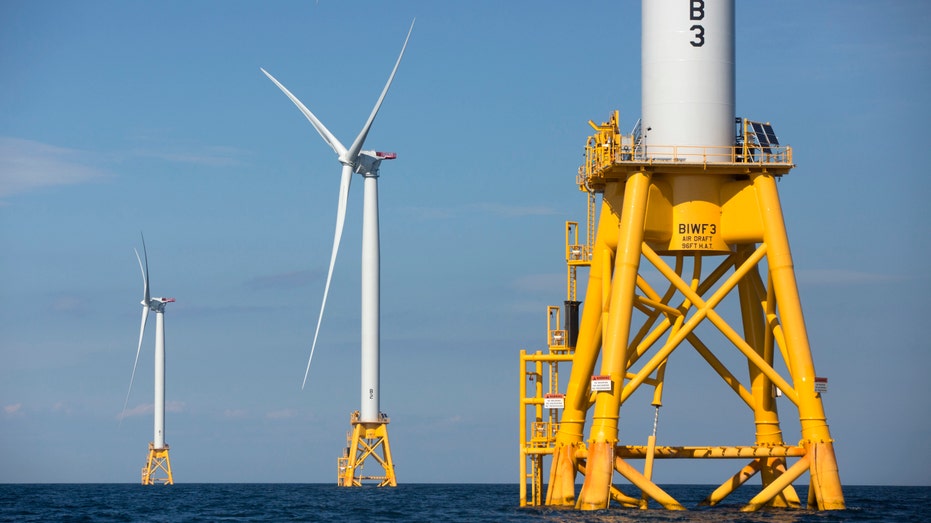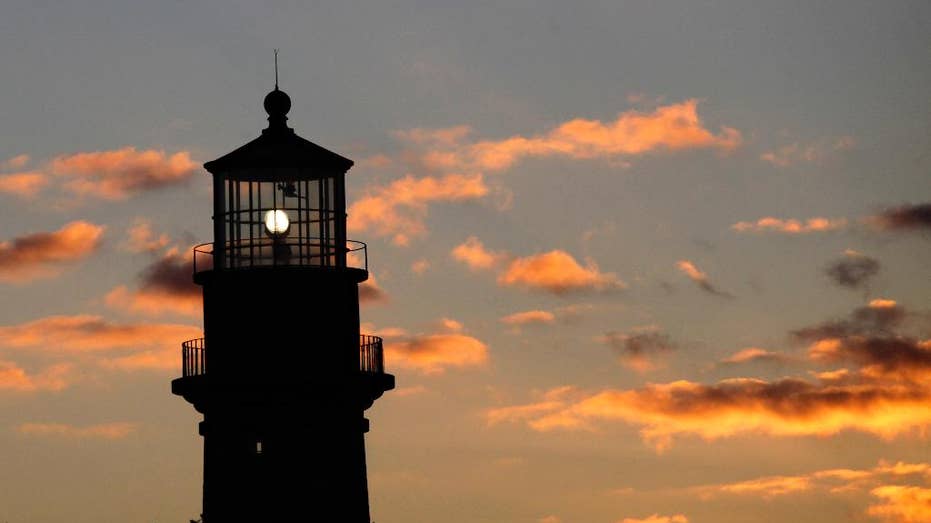Biden backs $2B wind energy project off Martha's Vineyard despite concerns about fisheries
Critics say excessive growth of wind power capacity could put power grids at risk of shortages
President Biden's Interior Department on Monday announced that it has completed its analysis of a $2 billion offshore wind project that the administration hopes will represent a model for increased wind energy production along the East Coast.
The Vineyard Wind Project is an 800-megawatt wind energy project in federal waters off the coast of Martha's Vineyard and aims to generate enough electricity to power as many as 400,000 homes in New England.
"Offshore energy development provides an opportunity for us to work with Tribal nations, communities, and other ocean users to ensure all decisions are transparent and utilize the best available science," Bureau of Ocean Energy Management (BOEM) director Amanda Lefton said in a Monday statement.
She added that the BOEM appreciates "everyone's participation in the process" and looks forward "to continuing to work with stakeholders on the future analysis of offshore wind projects."

The University of Maine's 9,000-pound prototype generates power off the coast of Castine, Maine. (AP Photo/Robert F. Bukaty, File)
If approved, the Vineyard Wind project would be the first utility-scale wind power development in federal waters. A smaller wind farm operates near Block Island in waters controlled by the state of Rhode Island.
"We look forward to reaching the final step in the federal permitting process and being able to launch an industry that has such tremendous potential for economic development in communities up and down the Eastern seaboard," Vineyard Wind CEO Lars T. Pedersen said in a statement.
A previous Massachusetts offshore wind project called Cape Wind failed amid opposition from the Kennedy family and businessman William Koch, among others, who considered it a bird-killing eyesore in their ocean views.
BIDEN'S HALT OF NEW OIL AND GAS LEASES ON FEDERAL LANDS HAS LAWMAKERS DEMANDING ANSWERS
Supporters say Vineyard Wind, located nearly 15 miles offshore, is better situated than Cape Wind and uses superior technology with fewer and larger turbine blades. Under a preferred alternative being considered, the project's giant turbines will be located at least one nautical mile apart, allowing fishing boats easier movement around the blades, officials said.
"The Biden administration is putting wind back in the sails of this vital new industry," Sen. Ed Markey, D-Mass., a longtime cheerleader for the Vineyard Wind project, said in a statement. "Responsible development of wind off our coast (will) energize the economy, provide affordable electricity and move us further into a climate-safe future."
Critics say the excessive growth of wind power capacity could put power grids at risk of shortages.

Three of Deepwater Wind's turbines stand in the water off Block Island, R.I. (AP Photo/Michael Dwyer, File)
"Wind power can be a niche electricity source that supplements more reliable sources in certain regions, but any wind projects should make economic sense on their own terms," Robert Murphy, a research fellow at the Independent Institute and senior economist for the Institute for Energy Research told Fox News.
He added that he does not think the federal government should "be explicitly encouraging the growth of wind power, whether it's President Biden's plan to double offshore wind by 2030, or the newly proposed 30% investment tax credit for offshore wind for projects that start construction through 2025."
"In general, such subsidies distort markets when the government picks winners and losers," Murphy said. "Specifically in the case of wind power, excessive growth of its capacity can leave power grids vulnerable to shortages in periods of high demand."
TEXAS POWER GRID OPERATOR OVERCHARGED COMPANIES $16B DURING WINTER FREEZE
He noted the February freeze that shocked Texas and its power grid, causing heightened demand for energy sources.
"On the first day of the blackouts, Feb. 15, the cold hampered production from various sources, but natural gas supplied 46% of its theoretical maximum installed capacity, while wind only supplied 10%. By its very nature, wind is an intermittent source that must always rely on more traditional electricity sources as backup," Murphy said.
The Responsible Offshore Development Alliance (RODA) expressed concerns that the project could potentially interfere with local fisheries and economies and have a negative environmental impact. She also said the public has not had an opportunity to weigh in on the new developments.

Gay Head Light flashes a white signal in Aquinnah, Mass., on the island of Martha's Vineyard. (AP Photo/Mark Lennihan, File)
RODA executive director Annie Hawkins told Fox News that the Vineyard Wind project and "other projects proposed in a 1,400 square mile area off of New England will have major impacts to commercial fisheries."
Some of her concerns are related to safety and the "ability to transit through turbine fields that are too large to go around"; other concerns relate to "economic impacts" including "gear loss, displacement, port access, fuel and ice use [and] increased insurance costs, if insurance is available at all."
Hawkins also expressed skepticism over job promises and whether there "will really be net job creation when offshore wind jobs are mostly foreign and don't account for job loss in the fishing sector."
GET FOX BUSINESS ON THE GO BY CLICKING HERE
"Then there are the ecological effects of large-scale industrial projects that will convert millions of acres of ocean habitat, introduce huge amounts of artificial materials into the environment, alter oceanographic processes on a scientifically unknown scale, and impede the ability of our federal government to assess fish stock health in order to set catch quotas," Hawkins said.
CLICK HERE TO READ MORE ON FOX BUSINESS
She said the government needs to communicate clearer information to the public "as to the impacts of these projects; the outcomes for the environment, energy, and ratepayers; and a clear path to securing U.S. seafood and the communities that provide it."
Fishermen "want solutions," she concluded, but "there has been no regional or national strategic planning with fishing experts at all."
The Associated Press contributed to this report.




















